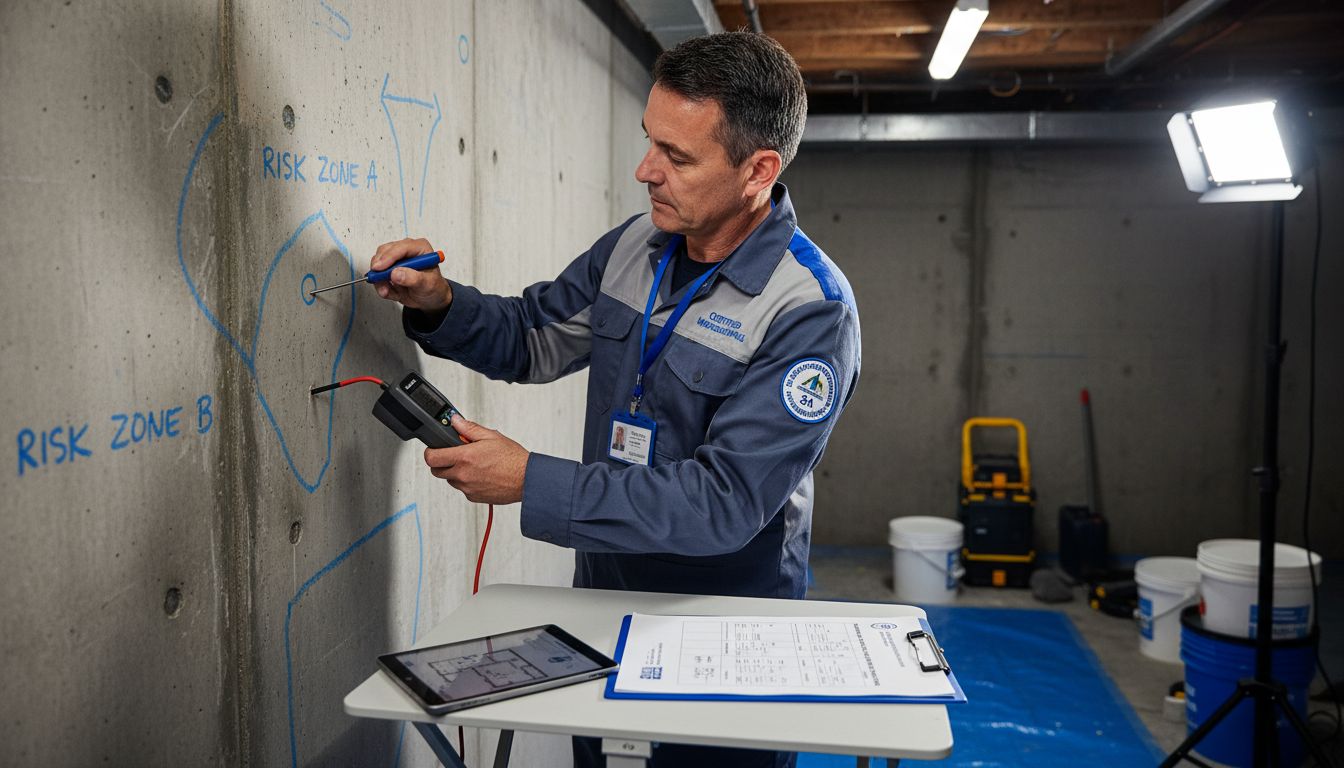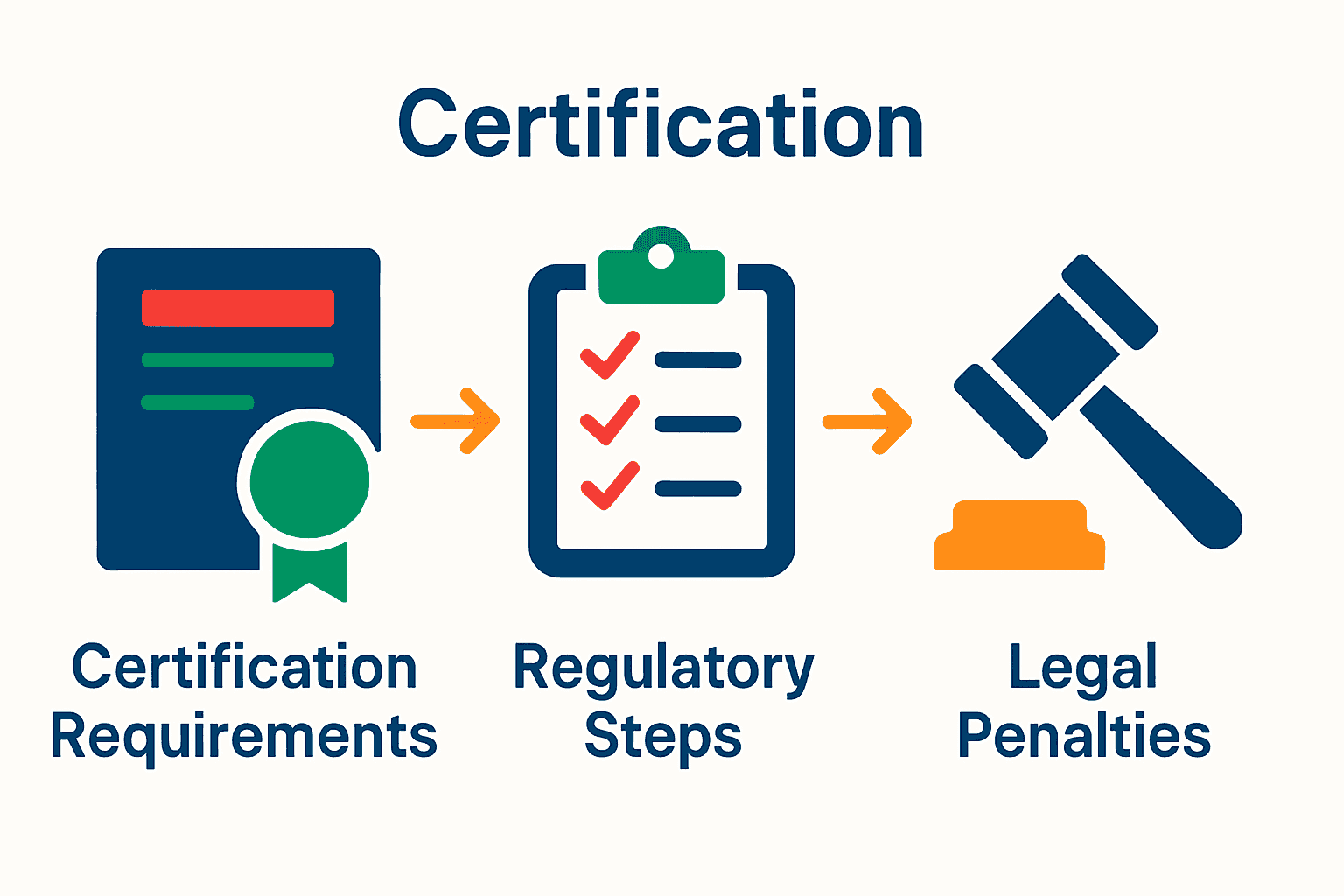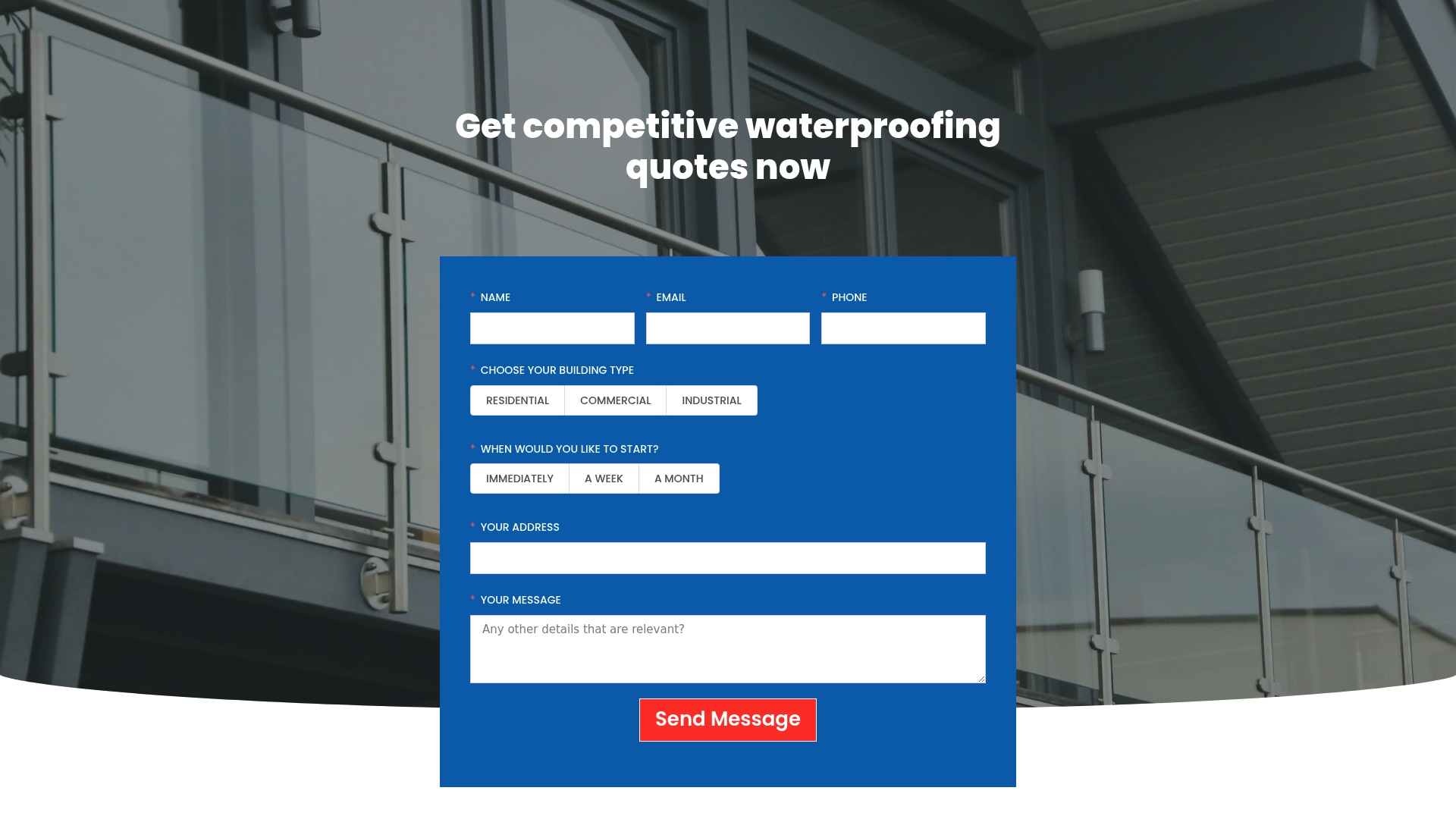Water leaks cause billions in property damage around the world each year. Even a small amount of moisture can threaten the safety and value of any building. In South Africa, strict regulations have made waterproofing a cornerstone of quality construction. Whether you own a home or manage a large project, knowing how to prevent water intrusion protects your investment and keeps your structure safe for years to come.
Table of Contents
- Defining Waterproofing and Its Importance
- Relevant South African Building Regulations
- Types of Waterproofing Standards and Codes
- Legal Compliance and Contractor Responsibilities
- Penalties, Liabilities, and Common Mistakes
Key Takeaways
| Point | Details |
|---|---|
| Importance of Waterproofing | Waterproofing is essential for safeguarding structures against water damage, ensuring longevity and structural integrity. |
| Regulatory Compliance | Adhering to South African building regulations, such as SANS 10400-Part L, is crucial for legal and professional accountability in waterproofing projects. |
| Role of Contractors | Waterproofing contractors must maintain certifications and comply with industry standards to avoid legal liabilities and ensure quality work. |
| Consequences of Failures | Inadequate waterproofing can lead to significant financial penalties and legal consequences, emphasizing the necessity of adherence to best practices. |
Defining Waterproofing and Its Importance
Waterproofing is a critical construction technique designed to protect buildings and structures from water damage. According to ID.org.za, waterproofing is a process that keeps structures impervious to water, preventing moisture from entering living spaces through cracks and structural vulnerabilities.
At its core, waterproofing serves as a protective barrier against potentially devastating water-related issues. Water can infiltrate buildings through multiple pathways – tiny concrete pores, structural cracks, foundation seams, and permeable building materials. Without proper waterproofing, these entry points can lead to significant structural damage, mould growth, and compromised building integrity.
The importance of waterproofing extends far beyond simple moisture prevention. Effective waterproofing protects against:
- Structural degradation
- Mould and mildew development
- Foundation weakening
- Interior damage to walls and floors
- Reduced property value
By implementing comprehensive waterproofing strategies, property owners can safeguard their investments and ensure long-term structural health. Understanding Waterproofing Methods Explained Simply provides additional insights into the various techniques used to protect buildings from water intrusion.
Relevant South African Building Regulations
South Africa has developed comprehensive building regulations to ensure proper waterproofing standards across construction projects. Government sources have established a National Certificate for Waterproofing at NQF Level 2, demonstrating a commitment to improving industry skills and professional standards in waterproofing techniques.
One of the most critical regulatory frameworks is SANS 10400-Part L, which provides specific guidelines for roof waterproofing. According to Ndlambe Municipality regulations, this standard mandates that waterproofing systems must be installed by competent professionals following manufacturer instructions, with a minimum performance requirement of remaining watertight for at least five years without extensive maintenance.
Key regulatory requirements for waterproofing in South Africa include:
Here’s a summary of the key South African waterproofing regulations and standards:
| Regulation/Standard | Main Focus | Key Requirements |
|---|---|---|
| SANS 10400-Part L | Roof waterproofing | Competent installer 5-year minimum performance Follow manufacturer instructions |
| National Certificate (NQF Level 2) | Industry skills | Professional training Certification mandatory |
| Building Codes Compliance | Legal standards | Adherence to installation guidelines Mandatory inspections |
| WTASA Guidelines | Professional conduct | Member integrity Open competition Promotes industry standards |
- Mandatory professional certification for waterproofing specialists
- Strict installation guidelines for different building types
- Performance standards for waterproofing materials
- Compliance with national building codes
- Regular inspection and maintenance protocols
Understanding Waterproofing Regulations in South Africa offers additional insights into the complex legal landscape governing waterproofing practices, helping property owners navigate these essential requirements effectively.
Types of Waterproofing Standards and Codes
South Africa has developed comprehensive waterproofing standards to ensure construction quality and protect buildings from moisture-related damage. SANS 10400-Part L provides detailed guidelines for waterproofing systems, emphasizing critical considerations such as exposure levels, protection measures, and specific substrate conditions that can impact long-term structural integrity.
The Waterproofing Trade Association of South Africa (WTASA) plays a pivotal role in maintaining industry standards. According to SAPMA, the association promotes professionalism and integrity within the waterproofing sector, ensuring open competition and adherence to rigorous professional standards among its members.
Key waterproofing standards in South Africa encompass multiple critical aspects:
- Detailed substrate preparation requirements
- Specific material performance specifications
- Installation technique guidelines
- Environmental exposure considerations
- Long-term durability expectations
Waterproofing Systems Explained offers deeper insights into the complex landscape of waterproofing standards, helping professionals and property owners understand the intricate regulatory framework that governs moisture protection in construction.
Legal Compliance and Contractor Responsibilities
Waterproofing contractors in South Africa operate within a complex legal framework that demands rigorous professional standards and ethical conduct. SAPMA emphasizes the critical importance of maintaining open competition and professional integrity within the waterproofing industry, establishing clear expectations for contractor performance and business practices.
Contractors are legally obligated to meet multiple compliance requirements, which include demonstrating technical competence, adhering to national building regulations, and ensuring work meets specified quality standards. This involves maintaining current certifications, following manufacturer installation guidelines, and providing comprehensive documentation of their waterproofing interventions.
Key legal responsibilities for waterproofing contractors include:
- Obtaining and maintaining professional certifications
- Complying with SANS building standards
- Providing accurate project documentation
- Implementing industry-approved installation techniques
- Offering meaningful warranties for completed work
- Maintaining professional liability insurance
- Conducting thorough pre-project site assessments
What is Waterproofing Certification? provides additional context about the professional standards that guide contractor accountability and performance in the South African construction landscape.
Penalties, Liabilities, and Common Mistakes
Waterproofing failures can result in significant legal and financial consequences for contractors and property owners. SANS 10400-Part L highlights the critical importance of proper substrate preparation, warning that improper techniques can lead to moisture vapor entrapment and structural delamination, which can trigger substantial legal liabilities.
According to ID.org.za, the most common waterproofing issues include leaking roofs, persistent damp walls, and basement water infiltration. These problems not only compromise building integrity but can also expose contractors and property owners to potential legal actions, warranty claims, and expensive remediation costs.
Key penalties and potential liabilities include:
- Contractual breach of warranty claims
- Mandatory repair and replacement costs
- Professional licensing suspensions
- Legal damages for structural deterioration
- Potential negligence lawsuits
- Financial penalties for non-compliance
- Reputational damage to contracting businesses
A to Z of Roof Waterproofing provides comprehensive guidance on avoiding these critical mistakes and understanding the full scope of potential risks in waterproofing projects.
Secure Your Property with Expert Waterproofing Solutions Tailored to South African Regulations
Understanding and complying with South Africa’s waterproofing regulations can feel overwhelming. You want to avoid costly mistakes like structural damage or legal penalties that stem from poor installation or uncertified contractors. This guide highlights essential standards such as SANS 10400-Part L and emphasises the importance of professional certification—key to protecting your home or business from water damage and ensuring peace of mind.
Don’t leave your property at risk. Proper waterproofing is vital to maintain structural integrity and avoid the frustration of leaks, dampness, or expensive repairs. Delve deeper into best practices and industry standards with our comprehensive articles, then connect with trusted specialists ready to deliver quality results.
Looking for trusted waterproofing professionals who understand South African regulations inside and out? Explore our expert insights in Uncategorized – Pro Waterproofing to learn how to spot certified contractors and avoid common pitfalls.
Ensure your waterproofing project meets all legal and quality benchmarks by contacting Pro Waterproofing today. Visit Pro Waterproofing to get started on securing your property with solutions that last.
Frequently Asked Questions
What are the main types of waterproofing methods used in construction?
Effective waterproofing methods can include liquid membranes, sheet membranes, cementitious waterproofing, and exterior waterproofing systems. Each method has specific applications and benefits depending on the building materials and structure.
What regulatory standards must waterproofing contractors follow?
Waterproofing contractors must comply with SANS 10400-Part L, which outlines guidelines for roof waterproofing, as well as other related national building codes ensuring proper installation and performance standards.
How can I ensure my waterproofing project meets legal compliance?
To meet legal compliance, ensure that your waterproofing contractor has the necessary professional certifications, follows manufacturer installation guidelines, and provides accurate documentation of the waterproofing work performed.
What are the consequences of failing to meet waterproofing regulations?
Failing to meet waterproofing regulations can result in significant penalties, including costly repair and replacement expenses, professional licensing suspensions, and potential legal damages due to structural deterioration.
Recommended
- Understanding Waterproofing Regulations in South Africa – Pro Waterproofing
- Understanding the Importance of Waterproofing in South Africa – Pro Waterproofing
- Quality Assurance in Waterproofing: Complete Guide
- Waterproofing Systems Explained: Types, Methods, Use Cases
- Industrial Fencing Requirements in South Africa – Jumalu Fencing
- Accurate Water Calculations for Part G Regulations Success In 2025




